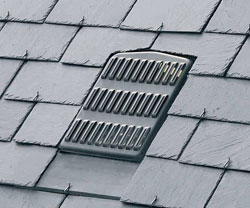Types Of Loft Ventilation
If you’ve discovered that you need to undertake a loft ventilation project, it’s useful to know the different types of loft ventilation that can be used, as well as the available vent styles and common mistakes that you will want to avoid:
What are the Two Main Loft Ventilation Types?
Intake and exhaust vents are the two main types of loft ventilation. In order for loft ventilation to be as efficient as possible, both types of vents need to be used in conjunction with each other. If only one type of vent is used, the best case scenario is the system won’t be as efficient as possible. The worst case scenario is the lack of efficiency will cause moisture problems that lead to mold growth or structural warping.
Are There Different Styles of Loft Vents?
Yes, there are different styles of both intake and exhaust vents. The most commonly used vent styles are:
- Soffit
- Gable
- Ridge
- Roof
Each style has its own unique features and applications that make it different from the other options that are available. Soffit vents can be used for either form of ventilation. It’s also standard to use them with either roof or ridge vents. If gable vents are used, they are placed at either end of a loft. If this type of vent is already in place when soffit vents are added, it’s almost always a good idea to close the gable vents. This prevents any issues from arising that will make a space’s ventilation less effective.
The reason ridge vents are important is because they are used for exhaust ventilation. If this type of vent is used with a loft, it will ensure that hot air is able to leave a space as it rises. Roof vents are the last option that may be used to properly ventilate a loft. Not only is this type of vent generally positioned near the peak of a roof, but it’s common for them to be powered. While that does mean they can be very effective, the tradeoff is it also means they have to consume energy in order to function properly.
Common Loft Ventilation Mistakes You Will Want to Avoid
In addition to familiarizing yourself with the types and styles of loft ventilation that are available, it’s also useful to learn about the most common mistakes people make when undertaking this type of project. A very common mistake is assuming that if a little ventilation is good, then a lot of it is great. While this seems like a logical assumption at first, the truth is over-ventilating a space can present just as many issues as not having adequate ventilation for it. Another mistake you can avoid by being aware of it is assuming that what works well in one area of the country is the right choice for your ventilation needs. When you’re choosing the types and styles of vents you’re going to use, you need to make your local climate one of the primary factors that influences your decisions.

Categories
- Home
- Types Of Loft Ventilation
- Attic Ventilation
- Heat Recovery Ventilation
- Industrial Loft Ventilation
- Loft Roof Space Ventilation
- Natural Ventilation
- Pigeon Loft Ventilation
- Positive Pressure Loft Ventilation System
- Proper Roof Ventilation
- Roof Ventilation
- Soffit Loft Ventilation
- Solar Ventilation
- Loft Ventilation Companies
- Loft Ventilation Information
- Loft Ventilation Products
